US-Bangla pilot was mentally stressed, reckless: Nepali probe report
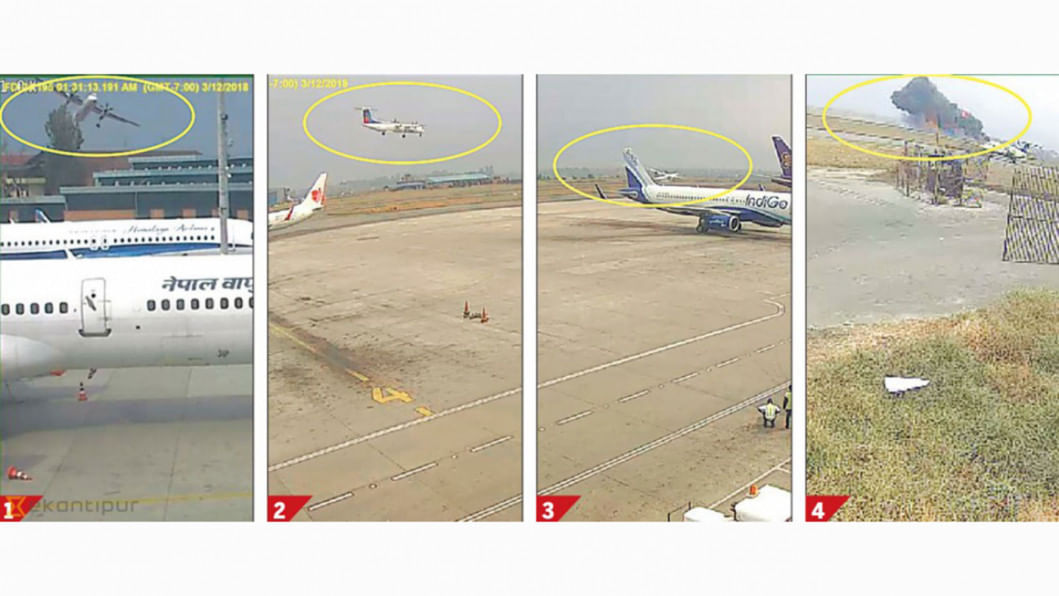
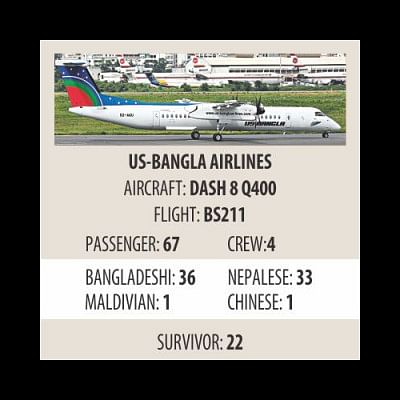
-- Nepal probe reveals fresh info from flight's voice recorder
-- Captain Abid Sultan lied to control tower
-- Smoked inside cockpit
-- Made erroneous decision
-- Made abusive statement toward female colleague
-- Cried on several occasions
-- Planned to resign on the day before
The pilot of the US-Bangla plane that crashed at Kathmandu's Tribhuvan International Airport in March, killing 51 people, appears to have lied to the control tower during the landing procedure and was smoking continuously inside the cockpit during the one-hour flight from Dhaka to Kathmandu.
According to details of the official investigation led by the Nepal government, a copy of which was obtained exclusively by the Post, Captain Abid Sultan was going through tremendous personal mental stress and anxiety, and a series of erroneous decisions on his part led to the crash of the Flight BS211.
Throughout the flight, Sultan was engaged in erratic behaviour that marked a departure from his usual character-signs that should have immediately raised red flags, Nepali investigators concluded in the report.
Six minutes before the landing time, Sultan had confirmed that the plane's landing gear was down and locked. "Gears down, three greens," the pilot said, according to the report, referring to the electrical indicator lights inside the cockpit.
However, when co-pilot Prithula Rashid conducted a final landing checklist, the landing gears were not down. Minutes later, the plane carrying 67 passengers and four crew members burst into flames after missing the runway during its second landing attempt.
The majority of the 22 Nepalis killed in the crash were medical students who had come home on a two-month leave before their final year results were published. Only 20 passengers survived the crash.
Investigators say Sultan had been smoking cigarettes frequently during the hour-long flight from Dhaka to Kathmandu. The former Bangladeshi Air Force pilot, who had clocked more than 5,500 flying hours, had not disclosed to the airlines that he was a smoker, leading investigators to conclude that Sultan was undergoing severe mental stress inside the cockpit.
"When we analysed the conversation on the Cockpit Voice Recorder, it was clear to us that the captain was harbouring severe mental stress. He also seemed to be fatigued and tired due to lack of sleep," investigators wrote in the report. "He was crying on several occasions."
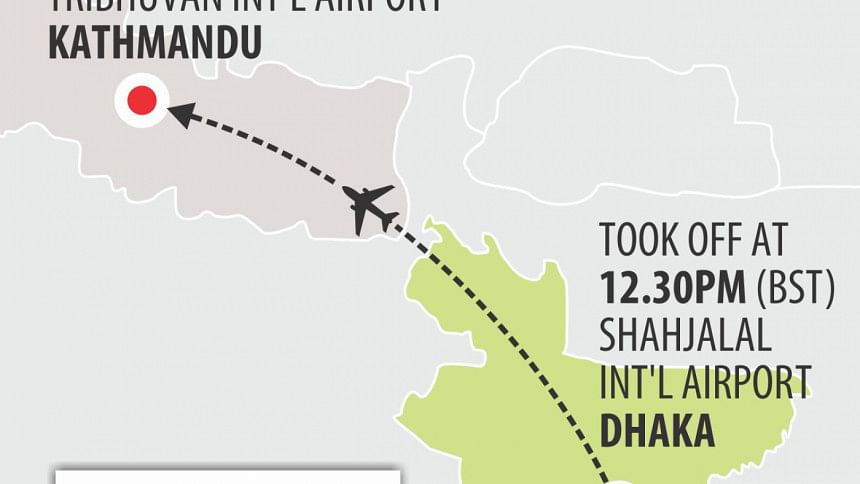
The voice recorder has captured nearly an hour-long conversation between the captain and his co-pilot in the cockpit, further demonstrating Sultan's tensed mood throughout the flight and a complete lack of situational awareness."I don't f…ing care about safe flight, you f… your duty," Sultan said at one point inside the cockpit, according to the report. It was not clear whom the pilot was directing the statement at, as the co-pilot was the only crew member present inside the cockpit during the flight.
The report also shows that Sultan made multiple abusive statements toward a female colleague [another co-pilot in the company] who had questioned his reputation as an instructor, and their relationship was a major topic of discussion throughout the flight. Records show that Rashid, the co-pilot, was a passive listener to Sultan's story throughout the flight.
"A cockpit is a place where personal conversations between colleagues are strictly prohibited when the aircraft is preparing to land or take off," said Captain Shrawan Rijal of Nepal Airlines. "It's a strictly enforced cockpit rule, which instructs pilots to focus entirely on the aircraft's operations."
The Sterile Cockpit Rule under the US Federal Aviation Administration regulation requires aircraft pilots to refrain from non-essential activities in the cockpit during critical phases of flight, normally below 10,000 feet.
The rule was imposed in 1981, after reviewing a series of accidents that were caused by flight crews who were distracted from their flying duties by engaging in non-essential conversations and activities during the flight.
At one point during the flight, according to details from the audio recorder, the pilot broke down and said that he was "very upset and hurt by the behaviour of the female colleague" and that "she was the only reason he was leaving the company." The captain had expressed his desire to resign a day before the accident, the report says, although he had not submitted any written documents. He said that he wished to continue on the job for three more months to complete training the co-pilots.
Sultan had joined US-Bangla in 2015. Prior to flying commercial flights, he had served in the Bangladesh Air Force, and according to reports, had a history of depression. While in the Bangladesh Air Force, back in 1993, he had been removed from active duty after a psychiatric assessment. But he was re-evaluated by a psychiatrist back on January 9, 2002, and had been declared fit for flying.
The report said that Sultan's detail medical history was not reviewed by US-Bangla Airlines when he was hired. Kamrul Islam, general manager and spokesperson for the US-Bangla Airlines, declined the Post's request for comment.
However, the report clarifies that Sultan did not exhibit any recurring mental issues during the medical examinations from 2002 to 2018.
"None of the medical reports that the committee reviewed from 2012 to 2017 mentioned any symptoms about depression," the report said, adding that during his routine medical evaluations, he was declared fit and free from any symptoms of depression.
The Civil Aviation Authority of Bangladesh conducts an annual medical evaluation of all of the country's pilots. The airline staff can also visit any medical consultants on their own for any health issues.
A senior aviation expert told the Post many pilots refuse to seek treatment for mental health issues because they fear the medical assessment will have a negative impact on their career.
"Broken relationships, personality disorders, work stress, alcohol and drug problems all spell disaster," the expert, who asked to stay anonymous because of his proximity to the investigation, said. "And they try to manage their depression themselves, without proper attention and treatment."
"Those who do not seek timely help might see a recurrence of manifestations brought upon by their depression," said Dr Khagendra Bahadur Shrestha, chief medical assessor of the Civil Aviation Authority of Nepal. Shrestha said he could not comment further before reviewing the report. Aviation officials are expected to make a summary of the report public at the end of August.
Sultan's medical records also indicated inconsistent and unreliable responses about his smoking habit. In his self-declaration form from 2012 to 2014, he wrote that he had never smoked. In 2015, Sultan said he used to smoke but had quit in 2010. Then in his most recent medical evaluations in 2016 and 2017, he mentioned that he had never smoked.
HOW THE CRASH UNFOLDED
The US-Bangla Airlines Flight BS211 departed from Shahjalal International Airport, Dhaka, at 12:30pm. About an hour later, the flight crew began preparations to land at Tribhuvan International Airport. At 1:50pm, the plane started its descent and the controls were handed over to the Kathmandu's airport air control room, which directed the flight to descend to 13,500ft, and cleared the aircraft to hold over a point named "Guras."
At 2:00pm, the airport control tower instructed the flight to reduce its speed and descend to 12,500ft. The control tower cleared BS211 to approach the 02 runway (from the Koteshwor side).
When the crew did not follow the control tower's instructions, the approach controller at TIA asked the pilots why they were not holding over Guras. At this time, based on the cockpit voice recordings, Sultan responded: "Holding will not be required in this case."
According to the report, Sultan then lit a cigarette, when the aircraft had just under three minutes to start their initial approach. This, the report says, demonstrated complacency and gross negligence of procedural discipline on the pilot's part.
At this time, the aircraft had lost its use of the plane's auto-flight guidance system control. And strong westerly winds, blowing at an average of 28 knots, pushed the aircraft to the east.
The tower informed the crew that they were clear to land via the 02 side of the runway, but instead the aircraft seemed to be headed for 20 (on the Boudha side). The report said that at this stage, there was a complete loss of situational awareness on part of the flight crew.
That is when another supervisor controller from the airport tower took over the microphone and cleared the flight to land via 20, assuming that it was the crew's intention to land from the Boudha side. The aircraft, however, was struggling to locate the runway and continued flying northeast. When the aircraft descended to around 175 ft above ground level, a ground proximity warning system alarm went off.
The tower immediately asked the flight crew about their intention. Sultan radioed his intention to land via 02. Then the air traffic control, while also handling the landing of another aircraft--a Buddha Air aircraft that was approaching from 02, cleared BS211 to land at 02. The information was relayed to BS211 to caution them that there was traffic ahead of them.
The aircraft then started to gain altitude. At this point, according to the report, the captain admitted to his co-pilot that he had made a mistake. Local pilots, who had been monitoring the development on the radar at the airport premises, raised concerns with the tower that the US-Bangla pilots appeared to be disoriented and lost. The tower then issued a landing clearance to the flight for either 02 or 20.
The CVR revealed that both pilots made several statements that reflected that they had completely lost their orientation of the runway, but the issue was not communicated to the ATC.
A few seconds later, the co-pilot reported sighting the runway. The captain, however, still appeared confused. Despite the runway in sight, the co-pilot made no callouts to discontinue the manoeuvre. Alarmed, the control tower hastily cancelled the landing clearance by saying "takeoff clearance cancelled."
The ground proximity warning alarm sounded continuously in the cockpit while the aircraft flew as low as 45 feet, right over the domestic terminal building. Nepali airline officials at the time had expressed horror watching the plane fly so close to the tower--and had praised the pilot for skillfully avoiding hitting the tower and at least half a dozen fueled planes parked at the international airport's parking bay.
Airport officials at the control tower had described the scene that afternoon, before the crash, as "something like a war film"--a complete suicidal attempt that nearly blew the tower.
The aircraft then finally touched down on the ground, with only its right landing gear hitting the runway, and skidded to crash through the airport's periphery before coming to a halt onto a nearby field.
The impact started a fire within six seconds because the aircraft had 2,800kg of fuel onboard.
The investigation commission said that because the crash had a low impact, passengers had high chances of survival, but the rapidly spreading post-crash fire prevented passengers from escaping.
The accident was one of the deadliest aviation disasters involving an international carrier in Nepal since the Thai Airways and Pakistan International Airlines tragedies in 1992. On July 1992, a Thai Airways flight from Bangkok crashed into a mountain outside Kathmandu, killing all 99 passengers and 14 crew members. Less than two months later, an Airbus operated by the Pakistani carrier crashed into another mountain while approaching Kathmandu. All 167 people on board were killed.
The investigation of the US-Bangla Flight 211 concluded that the ATC's handling of the flight was not a significant contributing factor to the crash. However, the report stated that some air traffic management procedural lapses were noted on the part of the crew at the control tower.
As part of its key safety recommendation, the investigation is expected to ask the Civil Aviation Authority of Bangladesh to renew the licenses of permanently-grounded pilots due to medical reasons, following thorough physical and psychological tests.
Copyright: Kathmandu Post/ Asia News Network

 For all latest news, follow The Daily Star's Google News channel.
For all latest news, follow The Daily Star's Google News channel. 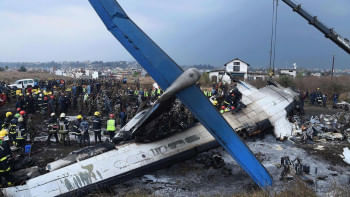
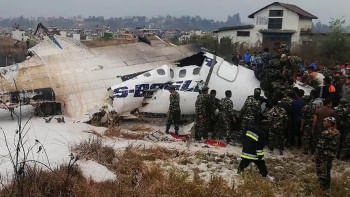


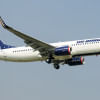
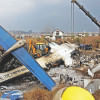

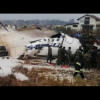



Comments